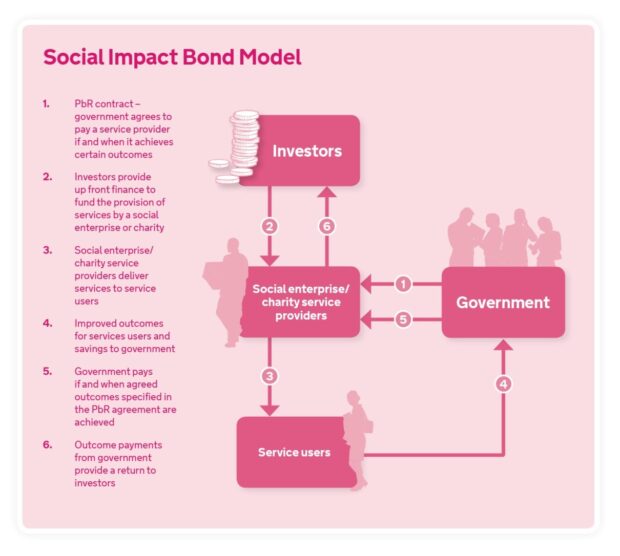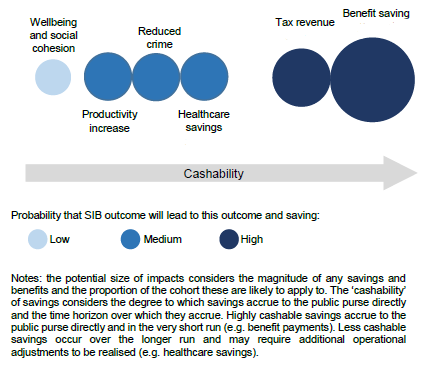Social impact bonds (SIBs) are transforming how the public sector pays service providers to deliver services which help deal with complex social problems. The Analysis and Insight team have recently been providing analysis on SIBs for the Office for Civil Society, who, in line with manifesto commitments, are looking to scale up the size and potential impact of SIBs across the UK.
What’s a SIB?
A SIB is a funding mechanism that aims to improve a social outcome through the collaboration of government, service providers and socially-minded investors. Specialist service providers deliver an intervention to the relevant target group, being financed up-front by investors. Public sector bodies then agree to pay for social outcomes on a payment by results basis. Payments from the public sector body, and therefore investor returns, increase with greater improvements in social outcomes. SIBs so far
SIBs so far
There are now 31 SIBs in the UK, helping with complex social issues including youth unemployment, homelessness and children in care. The UK has more SIBs than the rest of the world put together, but SIBs are being developed elsewhere too. For example, in the US, the state of Utah launched a SIB to provide early education services for more than 3,500 low-income children, while in Australia, the New South Wales Government have set up a SIB to enable children in care to return to their families.
When do SIBs work best?
Using payments by results incentivises provider performance and reduces the risk faced by government if an intervention is unsuccessful. Meanwhile investment enables providers without significant capital to deliver interventions without facing prohibitive risk themselves. Therefore, SIBs are very well suited to cases where new, innovative, but yet untested, interventions may work best, and where small or civil society organisations are best placed to deliver them. They can also support the scaling up of interventions that may have been successfully piloted on a smaller scale.
How should government pay?
Deciding which outcomes to pay for, and how much to pay, is crucial to the design of a SIB. As well as being clearly defined and measurable, the outcomes paid for should help solve the ultimate social problem being addressed. For example, a SIB aiming to prevent young people becoming NEET (not in employment, education or training) when they leave full time education may work with children whilst they’re at school; it won’t be known whether NEET has been avoided in time to pay for this result. Therefore a SIB should pay for outcomes where there is a clear link to a reduced risk of becoming NEET, such as better exam results, and behavioural improvements.
The amount paid for outcomes should reflect the benefits they bring, and, to ensure affordability, the savings to the public purse which are likely to result. Economists often have a key role in identifying the sources of benefits and savings, and estimating their value. The chart below outlines the benefits of NEET prevention which are of most value to the exchequer.
The amount offered for each outcome should take account of: (i) the total savings from preventing someone becoming NEET and (ii) how much the probability of becoming NEET decreases if the outcome is achieved. Analysis and Insight applied these principles and recommended outcome payments for the Youth Engagement Fund.
Give us your views
What do you think of SIBs as a way of funding public services? Have you been involved with setting up, investing in, or providing services through SIBs? Please do share your thoughts and experiences below.
More detail on UK SIBs can be found on the Centre for SIBs website.

Recent Comments